How to View a Macs Disk Usage & Storage Summary in Mac OS X
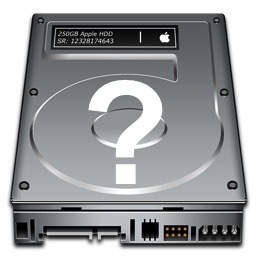 Ever wondered where on earth your Mac hard drives disk space has gone to? There’s little reason to wonder, because Mac OS X has a very simple disk usage summary tool that that will show you exactly where drive capacity is being used, conveniently sorted into a variety of file types.
Ever wondered where on earth your Mac hard drives disk space has gone to? There’s little reason to wonder, because Mac OS X has a very simple disk usage summary tool that that will show you exactly where drive capacity is being used, conveniently sorted into a variety of file types.
Looking at the storage summary panel is a helpful way to determine if a Mac is running low on drive space, to figure out what file type is consuming the space and give you an idea on how to free up space, and the panel can also be helpful for determining if an upgraded hard drive would be a worthwhile investment for the Mac.
This tutorial will detail how you can view a disk usage and storage summary on a Mac.
Accessing the Mac Disk Usage Summary
If you want to check a Macs disk space and disk usage, this is one of the simplest ways to do so:
- From anywhere in Mac OS, choose the Apple menu item and select “About This Mac”
- At the general ‘About This Mac window’, click on the “Storage” tab (or if you’re running an earlier Mac OS X version, click on “More Info” button)
- From the “Storage” tab, see the disk storage overview and capacity summary
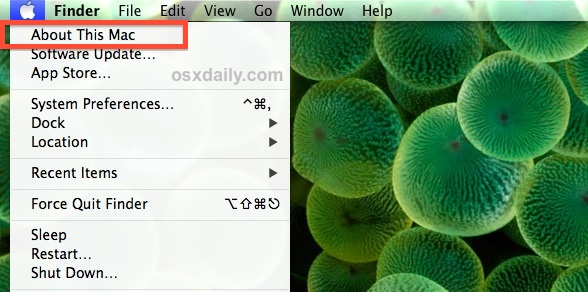
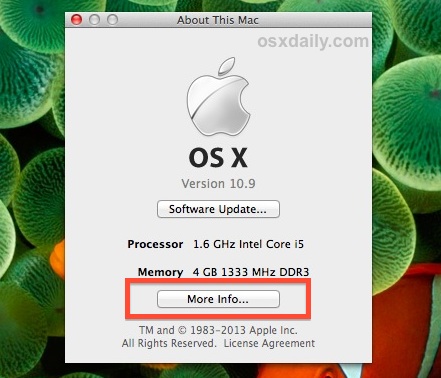
The storage overview looks like this, showing the disk space used on a Mac and the disk space available:
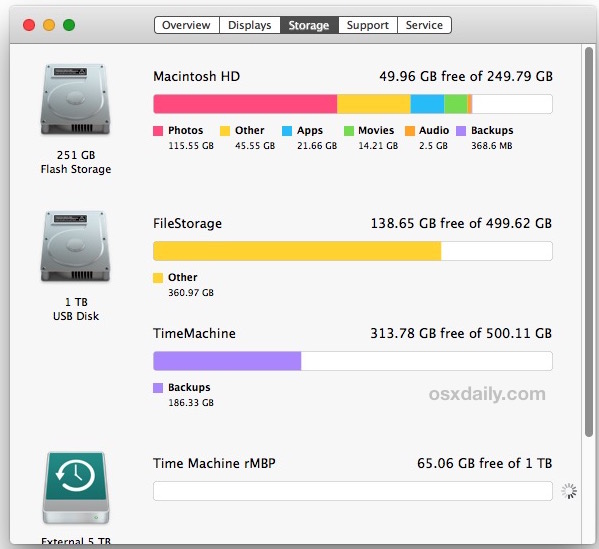
This will also quickly show what type of hard drive is included in the Mac, whether it’s a traditional hard drive, a “Flash Storage” drive (SSD), or a Fusion Drive.
If this screen looks familiar, it may be because the usage overview for Mac OS X is a lot like looking at the usage summary in iTunes for a connected iOS device, which also breaks down details on space usage.
Making Sense of the Mac OS X Storage Summary
The usage overview will show the freely available disk space like the Finder Status Bar, but also show the total drive storage capacity, and six general categories of data in an easy to scan graph:
- Audio – all music and audio files stored on the Mac, including the iTunes Song and Music libraries
- Movies – all movie files, whether user created from iMovie or downloaded from iTunes or elsewhere on the web
- Photos – all picture documents stored locally, including user imported photos from an iPhone or Camera, screen shots, or digitally created image files from Photoshop and Pixelmator
- Apps – all applications and executable files, including the /Applications directory and any other .app files stored around the Mac
- Backups – all locally stored backup files from Time Machine or iPhone (this is often zero KB if you turned the feature off)
- Other – every other document and file type on the Mac, including archives, zip files, docs, txt, pdf, dmg and other images like iso, saved messages, quite literally everything else, similar to “Other” in iOS
- (Free space) – the last item in the graph that is transparent, this is the freely available space shown in relation to used capacity
In the above screen shot example, the “Photos” section is taking up the vast majority of disk space, which is fairly common for users who take a lot of photos and transfer them to the Mac from an iPhone or other camera.
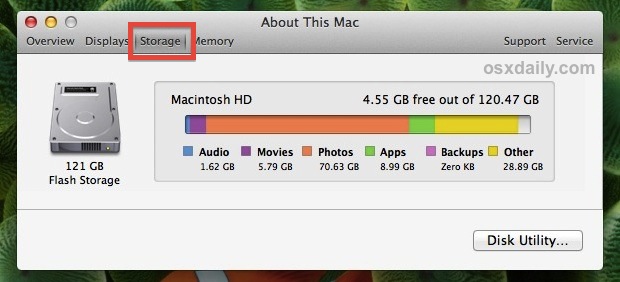
Now What?
While the storage summary panel provides a helpful overview of where the disk usage and capacity is consumed on any Mac, it is not an actionable screen that allows users to clean up their drives or file system. Instead, take the time to free up disk space manually as described here by completing a variety of tasks, including clearing out the Downloads folders, backing up data to external drives with Time Machine or cloud backups, or by using tools like OmniDiskSweeper to track down large files and data hogs and recover drive space that way.
If you’re constantly running into space issues, upgrading a primary hard drive can be we a worthwhile endeavor. At the very least, obtaining a large external drive to keep Mac backups and secondary storage on is not only good general maintenance policy, but it can also help to relieve the burden on a primary drive by offloading lesser used files and data.


I just open a xterminal and write df. :D
update: Well, I updated my os to 10.11.6 and the Finder window now shows the available space, so I guess that was a change between 10.11.3 and 10.11.4.
I just got a new-to-me mbp running on 10.11.3. My older mbp with newer OS (10.11.4) shows the available disc space at the bottom of any finder window, but this computer shows only how many items there are in an opened folder. Is there a way to turn on the “available space” info at the bottom of the bar? Or maybe I should upgrade my os…
Thanks
Our MacBook with OS X does not have a “Storage Tab” in About This MAC. Can this info be found any other way?
Another great trick for finding large files to clear out is to use Spotlight and search by file size, you covered it before here:
https://osxdaily.com/2012/04/17/find-large-files-in-mac-os-x-search/
I search by 500MB or more… tons of garbage floating around that you forget you have, from app and game demos, to DMG files, just things lingering around that get misplaced and long forgotten.
In it’s current form, it’s really not useful and nothing more than a gimmick. You can’t see which files and folders are classified into which category.
Forgot to mention: the “Other” catagorization is misleading, and should be broken down into “System”, “Library”, “Trash” and “Other”.
Where is this feature in Snow Leopard? Your headline refers to OS X generally, not just Mavericks (which I cannot upgrade to until Corel wake up and upgrade Roxio Toast Titanium to work fully in OS X 10.9).
This is in OS X Lion, OS X Mountain Lion, OS X Mavericks, and probably newer versions too. Snow Leopard is 5 years old, it doesn’t have many features that have long been part of OS X.
Great tip!, another useful application to see detailed info on what is using space is Whatsize
The “Other” space section on Mac OS X and iOS also includes the System files for the core OS, so don’t assume it’s all wasted space!
This is helpful, too bad you can’t double-click the items to open them into pre-sorted folders though